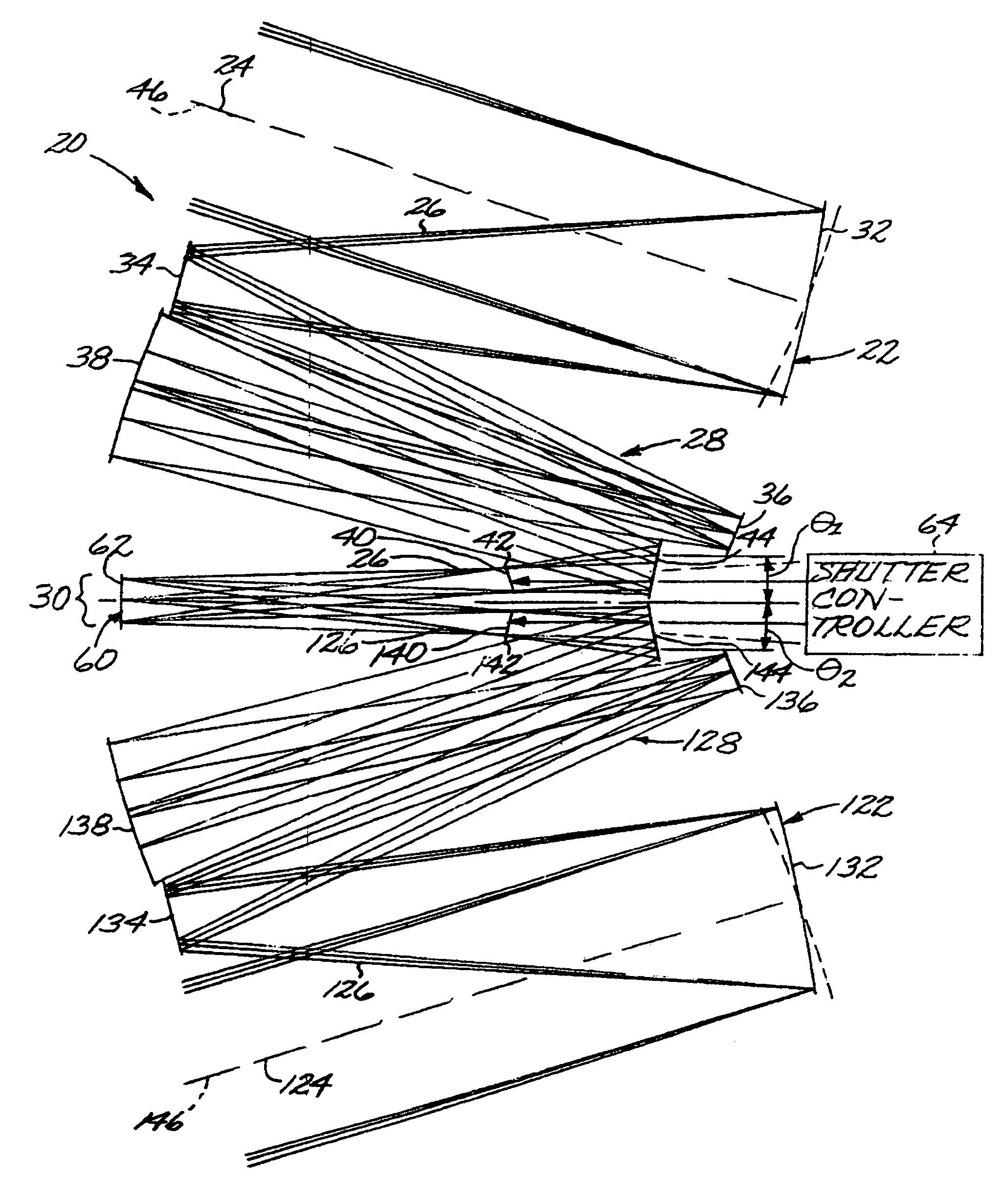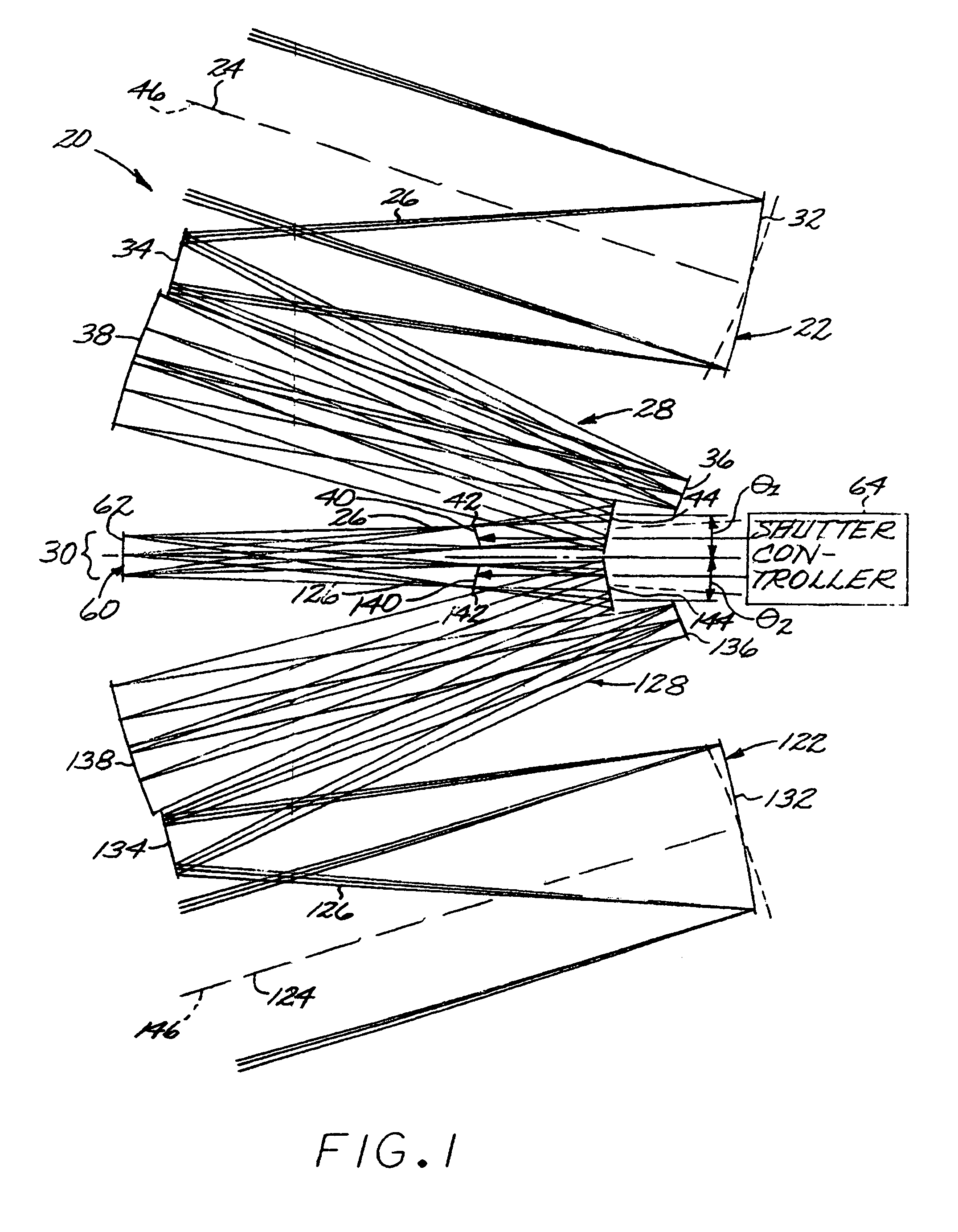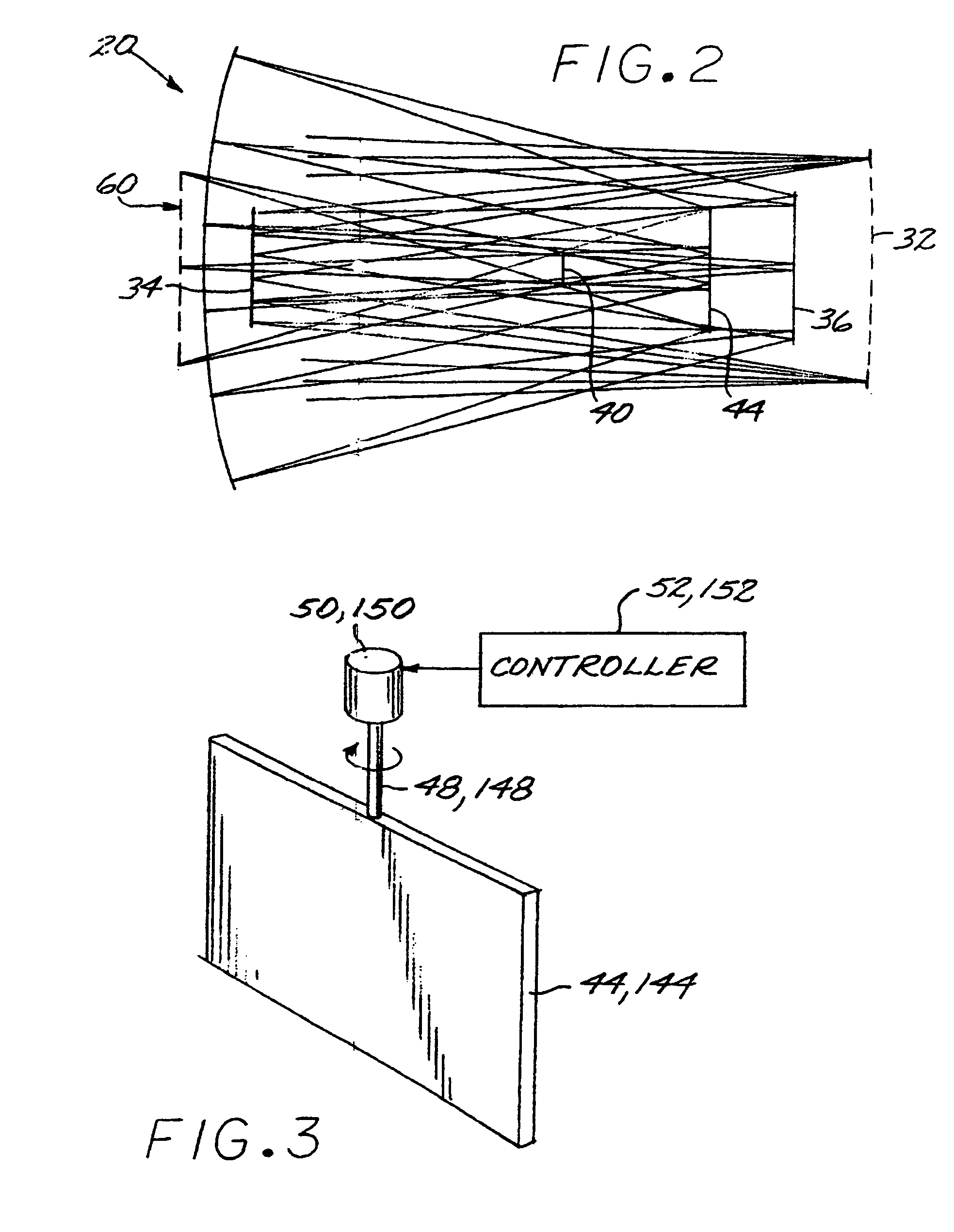Multi-telescope imaging system utilizing a single common image sensor
a multi-telescope imaging and sensor technology, applied in the field of multi-telescope imaging systems utilizing a single common image sensor, can solve the problems of expensive optical train and sensor components, and achieve the effect of reducing the envelope size, reducing the cost, and facilitating the registration and calibration of images
- Summary
- Abstract
- Description
- Claims
- Application Information
AI Technical Summary
Benefits of technology
Problems solved by technology
Method used
Image
Examples
Embodiment Construction
[0025]FIGS. 1 and 2 are ray trace illustrations of a first embodiment of a multi-telescope imaging system 20. FIG. 1 is a side-elevational view, and FIG. 2 is a plan view in which the components are difficult to distinguish because they are stacked overlying each other. Consequently, some of the individual components of FIG. 2 are not numbered. The embodiment of FIGS. 1 and 2 utilizes two telescopes, although there may be three, four, or more telescopes as will be discussed in relation to other embodiments.
[0026]The multi-telescope imaging system 20 includes a first telescope 22 having a first-telescope input line of sight 24 and a first-telescope ray path 26 that passes through an optical train 28 of the first telescope 22 and is ultimately incident upon a focal surface imaging location 30 at a first-telescope angle of incidence θ1, which in this case is a non-normal angle of incidence. Any optical train 28 having an operable combination of reflective and / or refractive optical elem...
PUM
 Login to View More
Login to View More Abstract
Description
Claims
Application Information
 Login to View More
Login to View More - R&D
- Intellectual Property
- Life Sciences
- Materials
- Tech Scout
- Unparalleled Data Quality
- Higher Quality Content
- 60% Fewer Hallucinations
Browse by: Latest US Patents, China's latest patents, Technical Efficacy Thesaurus, Application Domain, Technology Topic, Popular Technical Reports.
© 2025 PatSnap. All rights reserved.Legal|Privacy policy|Modern Slavery Act Transparency Statement|Sitemap|About US| Contact US: help@patsnap.com



